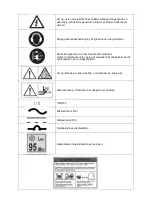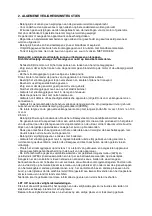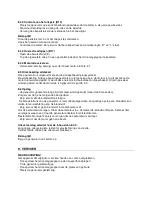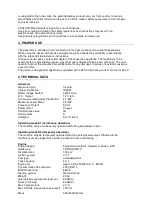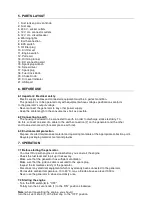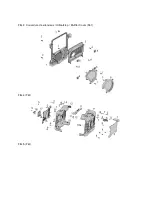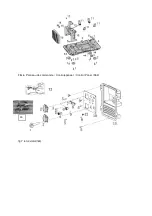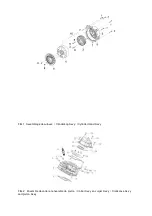
2. GENERAL SAFETY INSTRUCTIONS
- Important: No changes may be made to the generator.
- Only original parts may be used for maintenance and accessories.
- No changes may be made to the settings of the motor or generator. The speed preset by
the manufacturer is not allowed to be changed.
The generator or connected equipment may be damaged.
- Repairs and adjustment work may only be carried out by authorized trained personnel.
- Important: Petrol and petrol fumes are highly combustible or explosive.
- Risk of explosion: Never operate the generator in rooms with combustible materials.
- Do not refuel or empty the tank near open lights, fire or sparks. Do not smoke!
Important: Exhaust gases can escape despite the exhaust hose. Due to the fire hazard, never direct
the exhaust hose towards inflammable materials.
- Always switch off the engine when transporting and refueling the generator.
- Make sure that when you refuel the generator, No fuel is spill on the engine or exhaust pipe.
- Place the generator in a secure, level position.
Do not turn, tip or change the generator's position while it is working.
- Secure the generator against shifting and toppling during transport.
- Guard against electric danger.
- Make sure the generator is properly grounded before use.
- Never connect the generator to the power grid.
- Never operate the generator in rain or snow.
- Never touch the generator with wet hands.
- Never use faulty or damaged electrical equipment (this also applies to extension cables and plug
connections)
- When working outdoors, use only extension cables that are approved for outdoor use and
which are marked accordingly (H07RN).
- The overall length of the extension cables used may not exceed 50 m for 1.5 mm² and 100 m for
2.5 mm².
- Important: Risk of burns. Do not touch the exhaust system or drive unit.
- The generator is driven by a combustion engine, which produces heat in the area of the exhaust
(on the opposite side of the sockets) and the exhaust outlet. You should therefore keep clear
of these surfaces because of risk of skin burns.
- Do not touch any mechanically driven or hot parts. Do not remove the safety guards.
- Children are to be kept away from the generator.
- Important: Danger of poisoning, do not inhale emissions.
- Never operate the generator in non-ventilated rooms. When operating the generator in rooms
with good ventilation, the exhaust gases must be channeled directly outdoors through an exhaust
hose.
- Place the generator at least 1m away from buildings and the equipment connected to it.
- Wear suitable ear protection when in the vicinity of the equipment.
- The values quoted in the technical data for sound power level (LWA) and sound pressure
level (LWM) are emission values and not necessarily reliable workplace values. As there
is a correlation between emission and emission levels, the values are not a reliable basis for
deciding on any additional precautions which may be needed. Factors influencing the actual
user emission level include the properties of the work area, other sound sources etc., the number
of machines and other processes in the vicinity, as well as the time span in which the operator
Summary of Contents for 5411074231583
Page 2: ......
Page 3: ......
Page 4: ......
Page 5: ......
Page 35: ...SCH MA LECTRIQUE ELEKTRISCH SCHEMA ELECTRICAL DIAGRAM...
Page 37: ...FIG 3 Couverture de silencieux Uitlaatklep Muffler Cover F61 FIG 4 F61 FIG 5 F61...
Page 38: ...FIG 6 Panneau de commande Controlepaneel Control Panel F62 fig 7 rotor stator f63 14...
Page 41: ...FIG 6 Syst me de mise feu Ontbrandingssysteem Ignition System Ass y...




